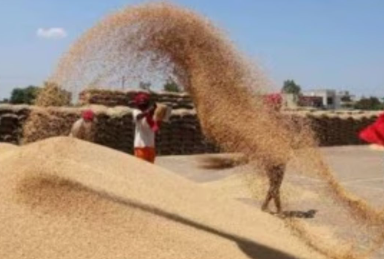Punjab’s Hybrid Rice Controversy
Punjab’s paddy milling sector is facing challenges regarding the late storage of paddy. The controversy revolves around hybrid rice seeds, specifically Sava 7501, Sava 7301, and 468. While hybrid rice is known for enhancing productivity globally, Punjab rice millers question the milling outturn (OTR) of these varieties. This issue is critical as it affects the financial viability of the milling industry.
Hybrid Rice Varieties in Punjab
In the 2023-24 season, approximately 2% of Punjab’s rice area was planted with these hybrid varieties. This includes 1.20% under Sava 7301, 0.56% under Sava 7501, 0.22% under Sava 468 For the current year, the area under Sava 7501 and Sava 7301 is expected to rise to about 5%. With around 1,400 tonnes of seed supplied, this could cover approximately 3.5 lakh acres of the state’s total 32 lakh hectares of rice cultivation.
Concerns of Rice Millers
Rice millers argue that these hybrids yield lower OTR, causing financial losses. The Food Corporation of India sets a minimum OTR of 67%. However, millers claim these hybrids only achieve 60-63%, leading to increased breakage during milling. This has raised concerns within the milling community.
Expert Opinions on Milling Outturn
Experts suggest that the issues raised by millers may not be solely due to the hybrid seeds. Factors such as harvest moisture management play a crucial role. Optimal milling recovery depends on harvesting at the right moisture levels and proper sun-drying. Delays in harvesting can lead to moisture loss, negatively impacting OTR. Furthermore, many mills in Punjab may require technological upgrades to enhance milling efficiency.
Performance of Hybrid Varieties
Ajai Rana, Chairman of the Federation of Seed Industry of India, defends the hybrid varieties. He states that Sava 7501 yields between 38 to 40 quintals per acre, while Sava 7301 yields around 34 quintals per acre. Both varieties have performed well in trials conducted by Punjab Agricultural University (PAU) and ICAR, often exceeding FCI standards for milling outturn. Despite the skepticism in Punjab, these hybrids have been successful in other states, where 25% to 40% of rice areas are planted with hybrids without reported milling issues.
Global Context of Hybrid Rice
Hybrid rice has gained popularity worldwide, especially in countries like China and the USA. These countries boast higher rice productivity, averaging between 7 to 9 metric tons per hectare, compared to India’s 4.3 metric tons. The Government of India supports hybrid rice adoption through initiatives like the National Food Security Mission (NFSM). Hybrid rice offers several advantages, including shorter crop cycles, better moisture stress tolerance, and increased yields. The Indian Council of Agricultural Research (ICAR) conducts trials to ensure new hybrids meet milling recovery standards before their release.
Quality and Pricing of Hybrid Seeds
Punjab’s agriculture department officials have raised concerns about the quality and pricing of hybrid seeds sold by private companies. They advocate for better regulation to ensure farmers receive reliable products at fair prices. This is crucial to encourage confidence in hybrid adoption and improve the overall productivity of Punjab’s rice sector.
Month: Current Affairs - November, 2024
Category: States Current Affairs






